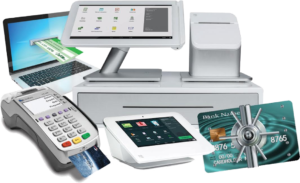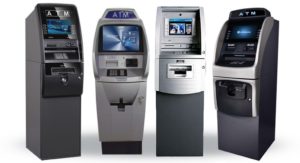Hello, Salnan POS here.
Today I want to write about, “what is merchant services”?
I am really going to get back, into the basics, the nitty-gritty in this particular post.
I’m just going to write about some of the basics.
Now, I am going to answer a really simple question…
Table of Contents
What is merchant services?
When we talk about merchant services, what do we really mean?
Basically, merchant services is extremely simple at its core.
The idea behind merchant services is, literally just transferring money
from a customer into a merchant’s bank account. That’s it.
It’s all about taking money from a customer’s wallet and putting it
into a merchant’s bank accounts.
Practical Workings of Merchant Services
Now a long time ago, that was really simple
because the way that worked is…I pulled out my wallet…I took out money, and I handed it to them,
and they took that money and they drove to their bank and they deposited it in their bank account.
Right? That made a lot of sense.
Checks are the same way… You write a check, you go over and you deposit it.
How Merchant Services Started
Well, what happened a long time ago, as to how merchant services really kind of got
Started, was that the banks realized that they had a fundamental problem.
Banks were spending a huge amount of money on having tellers at the bank window.
Their number one job as a teller was, people would walk in and say, “I need this much money.”
Then the teller would take cash and would give the people their money.
Whenever people wanted to buy something, they had to go to the bank and say, “I need this much cash.”
And the bank would give them the cash.
Then they would drive over and spend the money.
The banks were the ones that really kind of
started everything because they were of the opinion, “Why are we spending all
this money on these tellers?
Couldn’t we automate this?”
Right?
So along comes the ATM machine.
The ATM machine was really created to actually
cut costs for the bank.
Basically, when you look at an ATM machine,
you can think about the tens of thousands
of bank tellers, who were laid off as a result
of the ATM machine.
Because that’s all it was.
The ATM machine was just there because they
wanted to fire a bunch of tellers.
That’s really all it is.
It really did kind of make sense because not
only was it a big expense for the bank; it
was also extremely inconvenient for the customers
because they’d go in and obviously, you’re going to have human error.
It’s going to take longer too.
So there were just issues with it.
Once they automated it with this ATM machine, that was great.
Right?
Well, what happened was, people would go to the ATM machine and get cash out.
Then they would go to Walmart or wherever to spend the money.
When they would go into Walmart to spend the money, retailers started to notice a different
problem that they wanted to solve.
The problem they wanted to solve was, assuming I was going to Walmart and I had $20 in cash because
I’m picking up milk, eggs, bread, and few other grocery items.
And eventually, what do I see on my way back to the counter?
On my way back up to the counter, guess what I see?
I see a big-screen TV.
And I’m like, “Oh, look at that thing.
Wow, it is marked down.
It is only $295.
I want that TV.”
Can I get the TV?
No.
I’ve only got $20.
I want it and it is an impulse purchase.
I’d like to spend that money.
The retailer wants that revenue, but they
can’t get it because I only have $20 in my wallet.
What happened?
The retailers started looking and saying, “Wait a second.
That guy, that girl, who wants to buy that
TV, they do have this ATM card in their wallet.
That gives them access to all of their money.
So how can we get access to all of their money,
so that they can spend as much as they want in our particular store?”
What did they do?
They installed ATM machines.
Some of you might remember the days where
you go into a store, I even remember as a little kid going into a store.
You couldn’t use a particular ATM machine
because it had to be one of the ATM machines that were in your network for your ATM card.
It was such a pain.
You are like, “Look, an ATM machine.”
You go over and you are like, “Oh, it is
$5 to get out my $20.
Oh, and they don’t even take my debit card.”
It was just kind of a pain.
It was a little better for businesses, but still when somebody is doing an impulse purchase,
they may have lost the impulse by the time they walk all the way to the front of the
store to get cash out of the cash machine and then go back.
Visa comes along and Visa says, “We have a solution to this.
What we are going to do instead is, we are going to make a network that ties all the banks together.”
By the way, way back, Visa was actually owned by the bank.
It was actually a network of banks, as an affiliate group of banks basically.
They said, “Let’s all get together and what we are going to do is, instead of charging the customers to do this, we are going to charge the business owners, and we’re going to do an interchange fee.
We are going to tell them, ‘Hey, look, you can accept any of our cards at the point of sale right there at the register.
All someone has to do is, pull their card out and swipe it and boom…they can buy whatever they want, as long as they’ve got the money on their credit card or their check card.”
The banks and Visa really got together and said, “Wait a second. This is a big opportunity we can take advantage of.”
Over the course of time, Visa became its own entity.
MasterCard was also formed to compete with Visa.
Then American Express, Discover, and the rest of these other brands that are all working with these different banks to tie it all together, but the idea of merchant services is pretty simple.
Components of Merchant Services
Both new and seasoned business owners may come across confusing terms when it comes to credit card processing. One such term is “merchant services.”It seems to include a lot of different things, but there are three basic components of “merchant services”: The merchant service provider (credit card processing company), A merchant account or payment account, and Processing equipment such as credit/debit card terminals, smart terminals, Point-of-sale systems, online payments, ATM machines and more.
The Merchant Service Provider
The merchant service provider (credit card processor) is a major component of merchant services. Within the broad category of “merchant services providers” are different types of providers. There are direct processors, also sometimes called backend processors or acquirers. There are independent sales organizations (ISOs), who act as “resellers” of the direct processors. Lastly, there are payment facilitators (payfacs), also sometimes called aggregators.
- The direct processors are the ones that actually handle the transaction. There are only a handful of direct or backend processors. Some of which are Elavon and First Data. Others include Global payments, TD, Moneris, Chase Paymentech, etc
- Independent sales organizations (ISOs) are resellers. They process your transactions ‘through’ a direct processor. They’re not just a middleman, but it’s often easy to think of them in those terms. ISOs set your pricing, act as your first line of customer service, provide your monthly processing statements, and assist with issues such as PCI compliance and chargebacks.
- A payment facilitator, or payfac, is different than direct processors and ISOs because they don’t issue you your own merchant account. Instead, they essentially “sublet” their own merchant account to you. Payfacs often boast the shortest setup time, usually letting you process immediately after signup with no wait. Payfacs do not provide dedicated merchant accounts to each individual business.
Merchant Account
A merchant account is essentially a business line of credit that allows you to process payments. Unlike bank accounts, it’s not an account that you directly access. Instead, the payment processor will deposit the funds from your credit card transactions into a business bank account that you designate. Like other lines of credit, a merchant account can have limits, rates, and rules about its use.
Processing Equipment
The last piece of merchant services is the processing equipment that enables actual card acceptance. For in-person (“card-present”) transactions, that will be a classic terminal, Smart terminal, POS system, or eCommerce solutions. When it comes to online (“card-not-present”) transactions, it will include a payment gateway plus either a shopping cart, buy button, hosted payment page, or invoicing option. For transactions where card details are given over the phone, it will require a virtual terminal. Just know that any method of taking cards will require equipment of some kind.
How Much Do Merchant Services Cost?
Asking how much it will cost to take credit cards in your business, is a little bit like asking how much it costs to buy a car. There’s no single, fixed cost for merchant services. It depends on a number of factors.
Contact Salnan POS, for the best and cheapest FREE quotes. These include the best rates (lower rates than competitors), transparent pricing, no hidden fees, affordable payment solutions, advanced payment technology, fast set up, and excellent 24/7 customer service.



